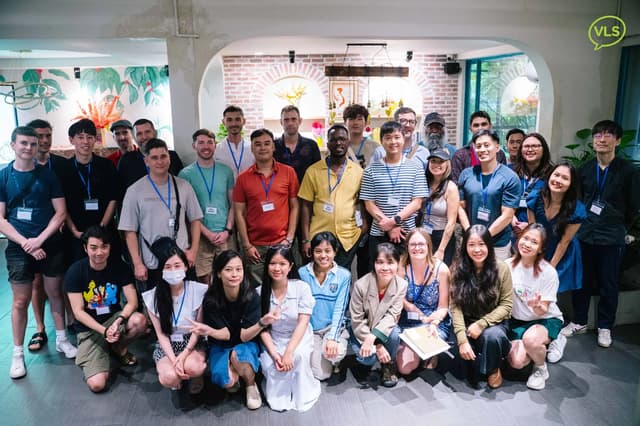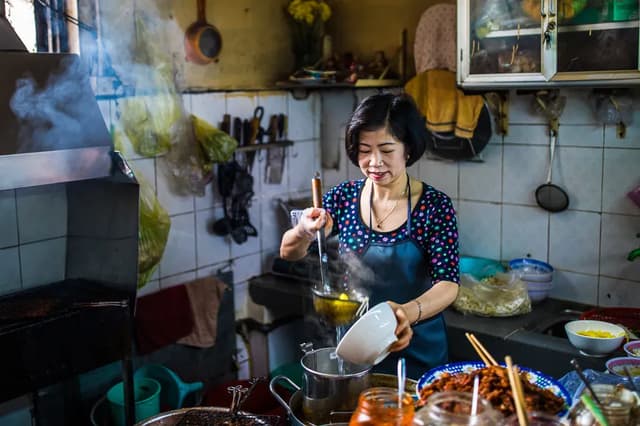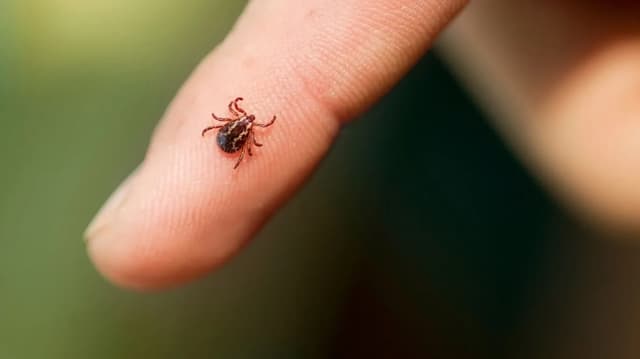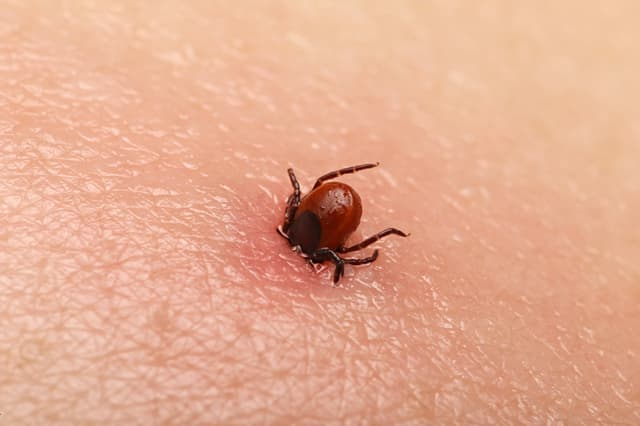About the Nung ethnic group
25/12/2024
Vietnamese ethnic groupsNung culture is characterized by its unique lifestyle, diverse crafts, and rich cuisine. Discover this fascinating cultural identity.
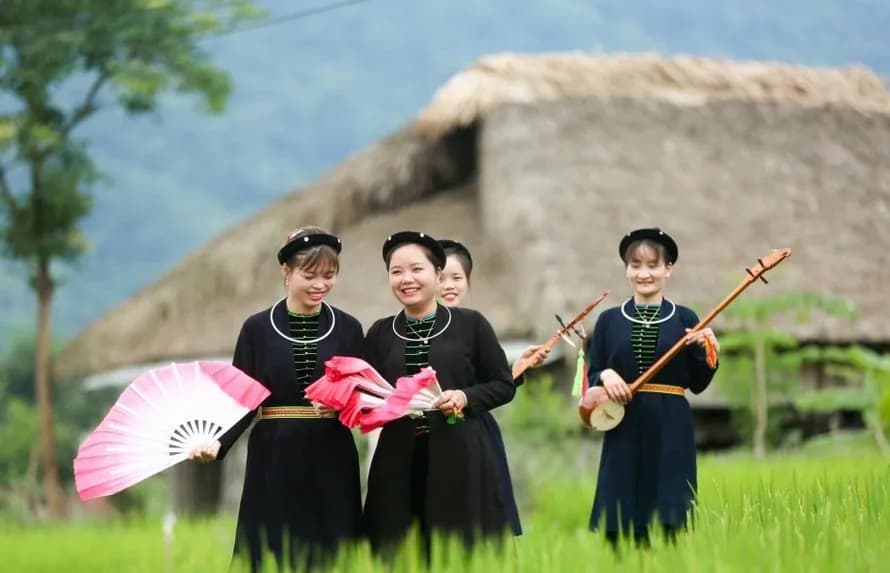
The Nung ethnic group is one of the most populous ethnic groups in Vietnam, living mostly in the northern mountainous provinces. Let's find out information about the Nung ethnic group in Vietnam below with iGuide.ai.
Historical origins
Historical origin: The Nung people mostly migrated from Guangxi (China) about 200-300 years ago.
Population
Population: According to the 2019 Census of 53 Ethnic Minorities, the Nung people have 1,083,298 people. Of which, there are 546,978 males and 536,320 females.
Language
Language: The language belongs to the Tay - Thai language group (Thai - Kadai language family).
Geographic distribution
Geographical distribution: The Nung ethnic group lives concentrated in the provinces of Lang Son, Cao Bang, Bac Kan, Thai Nguyen, Ha Giang, Bac Giang, Quang Ninh, Lao Cai, and Yen Bai.
Main Features Housing
The typical traditional house of the Nung people is a stilt house, roofed with tiles, with three floors. The first floor is the basement for poultry, livestock, and production tools; the second floor is the floor for people to live in and their household items; the third floor is the attic, used as a warehouse for food and other things to be kept in a dry place. In front of the house is a drying floor. In some areas, the Nung people build rammed earth houses. In the houses of the Nung people, the kitchen is not only for cooking, but also for heating, especially in the cold winter.
Traditional Costume
The traditional clothing of the Nung is quite simple, usually made of home-woven, indigo-dyed raw fabric and almost without any embroidery or decoration. Men wear shirts with a standing collar, a slit at the chest, and a row of fabric buttons. Women wear a five-panel shirt, buttoned on the right armpit, usually just past the hips. Nung women wear square scarves, with crow-beak-shaped ties. Nung men wear hats, especially when performing spiritual rituals.
Unique cuisine
The Nung also eat rice, sticky rice and prepare many dishes from rice and sticky rice. From rice, they make cao cuon, cao xang, from sticky rice they make colored sticky rice (purple, black, red, yellow), black canarium sticky rice, ant egg sticky rice; and make various types of cakes. In addition to regular dishes, the Nung have some special dishes associated with festivals. On the occasion of Lunar New Year, the Nung often slaughter a castrated rooster and wrap banh chung (a type of long cake). At the end of the first lunar month, they often make banh ngai (sticky rice cake with young mugwort leaves)... On weddings and birthdays, there must be a dish of roasted pig stuffed with mac mat leaves.
Religion and belief
The Nung people mainly believe in polytheism. They often worship three generations (parents, grandparents, great-grandparents). Worship of gods is carried out through the Lung Tung and harvest-praying festivals. The way of worship as well as the concepts of behavior show the imprint of the three religions (Buddhism, Confucianism, Taoism). In the religious practice of the Nung people, the role of shamans: Tao, Mo, Put, Then stands out.
Arts and Culture
The most distinctive feature of the folk art of the Nung people is Then. This is a performance ritual that is both artistic and spiritual. The Then master is the creator of both lyrics and melodies. The Tinh lute has no frets, so the Then master can completely improvise sounds on the instrument. It has a spiritual element when associated with many worship rituals, but Then is also completely festive when associated with events in people's lives, or on New Year's occasions...
Another very typical folk song of the Nung people is sli. Sli is a love song sung by young men and women in the form of a collective performance, usually by pairs of men and women singing in response to each other and sung in two parts.
Economic conditions
Regarding cultivation, the Nung cultivate on flat land and also on sloping land, hills, and gardens around the house. Wet rice is the traditional crop of the Nung. Growing star anise and selling star anise products also brings income to the people. In addition, the Nung also grow other valuable plants such as: tung, so, tobacco, tea, sugarcane, bamboo, canarium, cotton, indigo... Livestock raising plays an important role in economic activities as well as in the daily life of the Nung. Common livestock are: buffalo, cow, horse, goat, pig; duck, goose, and duck; dog, cat; bee, silkworm, fish (raised in ponds or right in rice fields). They know how to do many handicrafts: weaving, forging, casting, knitting, making wooden furniture, making do paper, making yin-yang tiles... Notably, the blacksmithing profession is maintained and increasingly developed, especially in Phuc Sen commune (Quang Hoa district, Cao Bang).
Commercial and educational activities
The market in the Nung area is developed, especially with the largest concentration of Nung people on traditional trading days. With their traditional settlements in the border provinces of Vietnam - China, the Nung people have vibrant border trade activities. Not only trading in small-scale trade, the Nung people also participate in loading and unloading, motorbike taxis, and agricultural production. These activities take place both inland and across the border.
Educational conditions: According to the 2019 Survey of 53 Ethnic Minorities, the rate of people aged 15 and over who can read and write in common script is 90%; the general school attendance rate of children in primary school is 100.9%; in lower secondary school is 97.2%; in high school: 73.4%. The rate of people aged 15 and over who can read and write in their own script is 14.3%. The rate of Nung ethnic children over 5 years old who go to school is 99.6%.
Above is some interesting information about the Nung ethnic group, Vietnam. Let's plan to explore, meet and experience the culture with the Nung people with iGuide.ai in the near future!
Source:
- Ethnic groups in Vietnam (National Political Publishing House Truth)
- Basic characteristics of 54 ethnic minorities in 2019 (Committee on Ethnic Minorities and General Statistics Office)
- Website of the Ethnic Committee, Website of Nhan Dan Newspaper
- Survey results collect information on the socio-economic status of 54 ethnic groups in Vietnam)
Essential Vietnamese Phrases for Tourists: A Guide to Communicating in Vietnam
By Admin
04/10/2024
Start your Vietnam adventure with confidence by mastering key phrases that will enhance your travel experience. While fluency is not required, knowing essential expressions can improve your safety and interactions with locals, providing a deeper connection to Vietnam’s rich culture. From basic greetings to directions, these phrases will help you communicate effectively and show respect for local customs. Take the opportunity to enrich your trip by engaging in Vietnam’s vibrant language and traditions.
Mẹo an toàn thực phẩm và nước uống thiết yếu cho du khách ở Việt Nam
By Duc Anh
04/10/2024
Culinary Journey
Khám phá những mẹo quan trọng về an toàn thực phẩm và nước để nâng cao trải nghiệm du lịch của bạn tại Việt Nam. Tìm hiểu cách chọn lựa các lựa chọn ăn uống an toàn, xử lý sản phẩm tươi sống và điều hướng an toàn nước để có một chuyến đi không phải lo lắng.
Ways to prevent ticks and lice
By Duc Anh
04/10/2024
Learn effective ways to minimize exposure to ticks and protect against tick-borne diseases. Discover how to prevent tick bites before and after outdoor activities and implement landscaping techniques to create a tick-safe environment around your home. Stay informed and safe during peak tick activity months.
Comprehensive Guide to Tick Bite and Lyme Disease Prevention
By Admin
04/10/2024
Discover effective ways to prevent tick bites and Lyme disease with our comprehensive guide. Learn about personal protective behaviors, the importance of regular tick checks, and how to use effective tick repellents. Discover insights into tick behavior, best practices for tick removal, and safe repellent options for maximum protection during outdoor activities.

